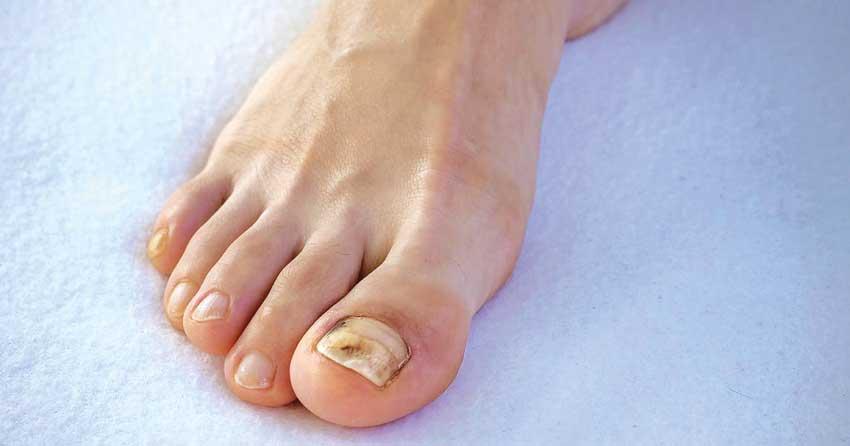02 Jul 2021 - {{hitsCtrl.values.hits}}

 While nails are not something we consciously look at often, a slight difference in our nails is always visible. While many causes can lead to difference in appearance in the nails, Consultant Dermatologist at the National Institute of Infectious Diseases Dr Nayani Madarasingha sheds light on ‘Nail Fungal infection’.
While nails are not something we consciously look at often, a slight difference in our nails is always visible. While many causes can lead to difference in appearance in the nails, Consultant Dermatologist at the National Institute of Infectious Diseases Dr Nayani Madarasingha sheds light on ‘Nail Fungal infection’.
“Different species of fungi are responsible for the fungal infection of the nail,” explained Dr Madarasingha. But she notes that there are many risk factors that contribute to the development of this infection. The risk factors are damaged nails, wearing occlusive footwear, increased sweating, hot and humid climate, poor circulation in legs, diabetes and unhygienic pedicure and manicure procedures.
Talking about the clinical features of the nail fungal infection, Dr Madarasingha noted that the features were discolouration of the nail plate, thickening of the nail plate, accumulation of keratin- like material between the nail plate and nail bed and elevation of the nail plate from the nail bed. “At the early stages of the infection, you can see that it starts at the free edge of the nail and then it will start to spread further into the nail. Usually at a time, 1-2 nails are affected,” she explained while adding that this infection is mostly seen in the toe nails than in the fingernails.
Treatment 
Dr Madarasingha also explained that the duration of the treatment could take a long time, usually several months. “Antifungals are used to treat this infection. Usually oral antifungal medication is given. Topical creams are only used if the infection is very superficial. Also, it takes time for the nail to come back to the normal appearance,” she noted. She also elaborated that the new nail will slowly grow outwards from its base and that it would take around 6 months to a year after the completion of the treatment for the nail to have its normal appearance. Infections in the fingernails clear up faster than the infections in the toenails.
She also noted that recurrences could occur as the causative fungi might not have fully cleared despite the end of the medical treatment. Recurrences could also occur due to unhygienic practices and unresponsiveness of the fungal species to the treatment. She added that laser treatment, chemical and surgical nail evulsion may be useful in certain instances for the total removal of the fungal species.
Check with your dermatologist
Dr Madarasingha noted that various other conditions could mimic the symptoms and characteristics of the fungal infection. “Diseases like psoriasis too can give rise to such features.
“Mostly, dermatologists are able to gauge whether the issue is a fungal infection or not, therefore it is imperative that one goes to a dermatologist,” she stated. Dr Madarasingha added that diagnosing at the early stages of the fungal infection and treating it results in a better outcome. However, to prevent incorrect diagnosis- sometimes scrapings and fillings of the infected area are sent for laboratory testing to find out the fungal species that are responsible for the infection. Dermatoscope is another instrument used by dermatologists to aid the diagnosis
Prevention
“Follow hygienic practices, keep nails clean, avoid sharing shoes and minimize the wearing of occlusive footwear. By doing this you can prevent the development of this disease,” stated Dr Madarasingha.
07 May 2024 5 hours ago
07 May 2024 5 hours ago
07 May 2024 6 hours ago
07 May 2024 7 hours ago
07 May 2024 7 hours ago